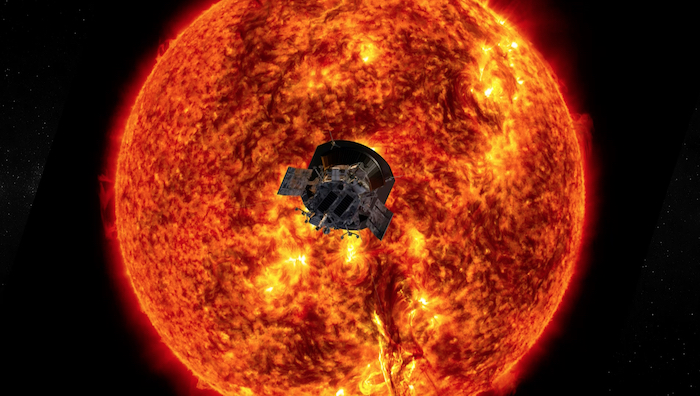The Parker Solar Probe's mission is due to run until the end of 2025. But it has already started to report back with some incredible findings.
In case you're not familiar, Parker is the closest spacecraft that we've ever sent to the Sun. The NASA probe is specially designed to withstand the mind-boggling heat of the corona, or outer atmosphere of our nearest star. And this means that it can deliver a view of our solar system's engine that was never before possible.
What does that look like? Observe!
Blowing in the wind
Space is an empty void of nothingness, occasionally dusted by the odd planet or star, right? Well, yes and no.
Ultimately, space is a very empty place. But the vast areas in between things like moons, planets, and stars do contain things. Like solar wind, for example. These are the particles and magnetic fields that are constantly being shot out from the Sun, creating the 'weather' of our solar system.
One of the other things? Dust! Cosmic dust, if we're going to be more accurate. There are super fine bits of dust found all through the solar system, so much so that we can even see it as clouds that reflect the rays of the Sun.
Burnt dust and switchbacks
Scientists were aware of these things before they launched the Parker Solar Probe. But what they are only just discovering are exactly how the Sun affects them.
For example, as you get closer to the Sun, the amount of dust begins to disappear. Why? The Sun is vapourizing it!
And the solar wind doesn't just 'blow' in a steady constant stream. Instead, it ebbs and flows in intensity, even performing moves called switchbacks. This is when the wind briefly folds backward toward the Sun, before flying outward again. This causes the wind to arrive in pulses.
Want to see what we mean? Check out this handy video made by NASA that examines the 5 new discoveries made by the Parker Solar Probe!
 The Parker Probe is one amazing piece of space engineering! (NASA)
The Parker Probe is one amazing piece of space engineering! (NASA)










🙂 😉 😀 😛 😮 😛 😮 😡 😐 😎 😥 😆 🙄 ❗ 😳